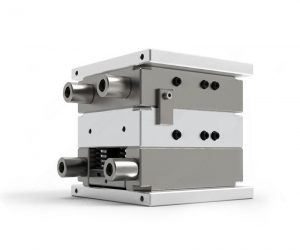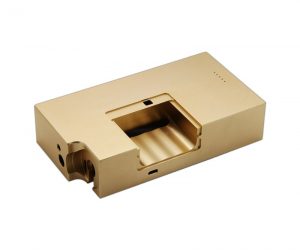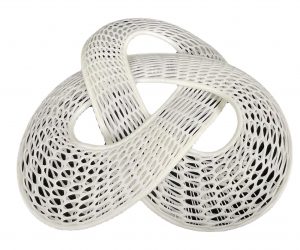Injection molding, a cornerstone of modern manufacturing, transcends the simplistic notion of merely injecting molten material into a mold. It's a complex interplay of thermodynamic forces, material science, and precision engineering, resulting in the creation of intricately shaped parts from a diverse array of polymeric and even metallic precursors. The process begins not with a passive heating of plastic pellets or powder, but rather a meticulously controlled thermal metamorphosis, achieving a rheological state optimized for injection under immense pressure. This pressure, far exceeding the yield strength of the material in its solid state, forces the molten polymer into the meticulously crafted confines of the mold cavity, a negative space mirroring the desired part geometry with tolerances often measured in micrometers.
The historical narrative, extending beyond the vague "late 19th century," reveals a fascinating evolution, punctuated by breakthroughs in materials science (the advent of high-performance polymers), process engineering (the development of sophisticated injection molding machines capable of handling increasingly complex geometries and materials), and control systems (the integration of real-time feedback loops and predictive modeling). This continuous refinement has propelled injection molding from a niche manufacturing technique to a ubiquitous process underpinning countless industries.
The seemingly simple act of injecting molten material belies the intricate machinery involved. High-precision injection molding machines, far from mere pumps, are sophisticated electromechanical systems incorporating servo-hydraulic drives, precise temperature control systems (often involving multiple zones within the barrel and mold), and advanced feedback mechanisms to ensure consistent injection pressure and velocity profiles. The molds themselves are not merely passive receptacles; they are precision-engineered tools, often constructed from hardened steel or specialized alloys, incorporating intricate cooling channels designed to precisely manage the thermal gradients during solidification. Furthermore, the process is orchestrated by sophisticated control systems, employing algorithms to optimize cycle times, minimize material waste, and ensure consistent part quality, often incorporating predictive maintenance capabilities to anticipate and mitigate potential failures.
However, the inherent complexity of the process introduces a spectrum of potential failure modes, extending beyond the rudimentary "part defects, mold damage, machine failure" categorization. These failures can manifest as subtle variations in dimensional accuracy, internal stress concentrations leading to premature part failure, or catastrophic mold damage resulting from thermal shock or excessive pressure. Troubleshooting and maintenance, therefore, require a deep understanding of the intricate interplay between material properties, process parameters, and machine performance, often necessitating specialized expertise and advanced diagnostic tools.
The applications of injection molding are virtually limitless, extending far beyond the commonplace examples of automotive parts, appliance casings, and consumer electronics. It plays a critical role in the production of high-precision medical devices, aerospace components, and even microfluidic devices, demonstrating its remarkable versatility and adaptability. The ability to produce high-quality, consistent parts, whether in high-volume production runs or low-volume, customized applications, solidifies injection molding’s position as an indispensable technology in the modern manufacturing landscape.
What is Injection Moulding?
Injection molding, or as some in the US call it, injection molding, is a nifty way to make parts from different materials. Imagine you have a liquid form of something—like metal, glass, or even chocolate—and you pour it into a special container called a mold. This mold has the exact shape and size of the part you want to create.
Here's how it works: You take your material, heat it up until it's all melty, then use a machine with a big screw to mix it around and push it into the mold under lots of pressure. Once it's inside the mold, it cools down and hardens, taking on the shape of the mold. After that, you pop the finished part out, and you're ready to do it all over again.
This method is super popular for making tons of parts quickly, especially those with tricky shapes or details. It's great because it can make parts that are really precise and consistent every time. Plus, it helps save money and materials by using just what you need and cutting down on extra work afterward.
History of Injection Moulding
Injection molding started way back in the late 1700s when James Watt came up with the first machine to make metal buttons. But it really took off in the late 1800s when they figured out how to use thermoplastics and thermosets. Thermoplastics can be melted and reshaped again and again, while thermosets can only be cured once and that's it.
John Wesley Hyatt was the first to patent an injection molding machine for thermoplastics in 1872. He used a plunger to shoot celluloid into a mold to make billiard balls. Then, in 1903, Arthur Eichengrün invented Békelite, the first thermoset you could inject mold. It was great for making things like electrical insulators and phone cases. In 1926, Eckert and Ziegler made a big step forward with their screw injection machine, which mixed and heated the material better. And in 1939, James Watson Hendry built the first gas-assisted injection molding machine, which helped reduce warping and improved the surface quality of the products.
After World War II, the injection molding industry exploded with new materials like nylon, polystyrene, polyethylene, polypropylene, and acrylic. These materials were cheaper and better than traditional ones like metals and wood. This technology also allowed for mass production of everyday items like toys, appliances, furniture, and packaging.
In recent years, injection moulding has evolved with the advances in technology and innovation. Some of the modern developments include:
- Computer-aided design (CAD) and computer-aided manufacturing (CAM) software that allow for faster and more accurate design and production of parts.
- Computer numerical control (CNC) machines that automate the machining of moulds with high precision and efficiency.
- Scientific moulding that applies scientific principles and data analysis to optimize the injection moulding process and quality.
- Multi-shot or multi-component injection moulding that can produce parts with multiple materials or colours in one cycle.
- Micro-injection moulding that can produce parts with micro-scale features and dimensions.
- 3D printing or additive manufacturing that can create complex parts without using a mould.
Equipment for Injection Moulding
The main equipment for injection moulding consists of three parts: the injection unit, the mould, and the clamp.
Injection Unit
The injection unit is responsible for melting, mixing, and injecting the material into the mould. It consists of three components: the hopper, the barrel, and the nozzle.
- The hopper is a container that holds the raw material in solid form such as pellets or granules. The material is fed from the hopper into the barrel by gravity or a mechanical device.
- The barrel is a cylindrical chamber that has a helical screw inside. The screw rotates and moves forward to transport the material along the barrel. The barrel is heated by electric heaters or oil to melt the material. The screw also acts as a plunger to inject the molten material into the mould through the nozzle.
- The nozzle is a tapered tip that connects the barrel to the mould. It has a valve that controls the flow of the material into the mould. The nozzle can have different shapes and sizes depending on the type and viscosity of the material.
Mould
The mould is a metal tool that has one or more cavities that have the shape and size of the desired part. The mould can be made of steel or aluminium, and it can be machined, cast, or 3D printed. The mould can have different features and components such as:
- Core and cavity: The core is the part of the mould that forms the internal features of the part, while the cavity is the part of the mould that forms the external features of the part. The core and cavity are usually separated by a parting line, which is where the two halves of the mould meet.
- Sprue and runner: The sprue is the channel that connects the nozzle to the runner, while the runner is the network of channels that distributes the material to each cavity. The sprue and runner can be cold or hot, depending on whether they are cooled or heated to maintain the temperature of the material.
- Gate: The gate is the opening that allows the material to enter each cavity from the runner. The gate can have different shapes and sizes depending on the type and flow of the material.
- Vent: The vent is a small gap or hole that allows air and gas to escape from the cavity during injection. The vent prevents air traps, bubbles, and burns in the part.
- Ejector: The ejector is a mechanism that pushes or pulls the part out of the mould after cooling. The ejector can be a pin, a blade, a sleeve, or a plate, depending on the shape and location of the part.
Clamp
The clamp is a device that holds and closes the two halves of the mould together during injection. The clamp can be hydraulic, mechanical, or electric, depending on the force and speed required. The clamp has two components: the fixed platen and
Injection Moulding Process
So, injection moulding is how we make all sorts of things. You see, there’s this process where they take some melted stuff and shoot it into a mold. This stuff can be metal, glass, rubber, or that plastic stuff. The mold is like a metal box with the shape of whatever part they want to make.
Here’s what happens: they heat up the material until it melts, then push it through a little tube into the mold. Once it’s inside, it cools down and hardens into the shape of the mold. After that, the mold opens up, and out pops the finished part.
This method is super common for making lots of different items. We’re talking about everything from little buttons and combs to car panels and kids' plastic toys. It’s pretty amazing how versatile and useful injection moulding is!
Injection Moulding Troubleshooting
Injection moulding troubleshooting is the process of identifying and solving problems that occur during the injection moulding process. Injection moulding is a widely used technique for producing plastic parts with complex shapes and high dimensional accuracy. However, injection moulding can also result in various defects that affect the quality and functionality of the parts. Some of the common injection moulding defects and their possible causes and solutions are:
- Weld lines: These are lines or marks that appear on the surface of the part where two or more flow fronts meet. Weld lines can weaken the part and affect its appearance. Weld lines can be caused by poor venting, low melt temperature, low injection speed, or complex geometry. To prevent or reduce weld lines, improve the venting of the mould, increase the melt and/or mould temperature, increase the injection speed, or modify the part design to avoid converging flow fronts .
- Delamination: This is when layers of material separate from each other within the part. Delamination can compromise the strength and integrity of the part and make it susceptible to cracking or breaking. Delamination can be caused by contamination of the material, moisture in the material, or excessive shear stress during injection. To prevent or reduce delamination, ensure that the material is clean and dry before injection, reduce the injection pressure and speed, or use a material with higher melt strength .
- Burn marks: These are dark or black spots on the part surface that indicate thermal degradation of the material. Burn marks can affect the appearance and performance of the part and indicate poor process control. Burn marks can be caused by trapped air or gas in the mould cavity, excessive melt temperature, excessive injection speed, or insufficient cooling. To prevent or reduce burn marks, improve the venting of the mould, lower the melt and/or mould temperature, lower the injection speed, or increase the cooling time .
- Sink marks: These are depressions or dimples on the part surface that occur due to shrinkage of the material in thick sections. Sink marks can affect the appearance and dimensional accuracy of the part and indicate uneven cooling. Sink marks can be caused by insufficient packing pressure, insufficient cooling time, high mould temperature, or thick wall sections. To prevent or reduce sink marks, increase the packing pressure and time, decrease the mould temperature, or reduce the wall thickness .
- Flash: This is excess material that extends beyond the part edge along the parting line or ejector pins. Flash can affect the appearance and functionality of the part and indicate poor mould fit or alignment. Flash can be caused by too much injection pressure, too much material, low material viscosity, or worn or damaged mould components. To prevent or reduce flash, lower the injection pressure and speed, lower the shot size, increase the material viscosity, or repair or replace the mould components .
Injection Moulding Applications
Injection molding transcends the simplistic notion of merely injecting molten material into a mold. It's a high-stakes dance between material science, engineering precision, and the unpredictable nature of high-pressure fluid dynamics. The process involves the forceful propulsion of a thermoplastic, thermoset, elastomer, or even specialized metal alloys into a meticulously crafted cavity, a negative space mirroring the desired final form. This "form-giving" isn't a passive process; it's a struggle against viscosity, thermal gradients, and the inherent complexities of material behavior under extreme conditions. The resulting part, whether a seemingly mundane bottle cap or a biocompatible implant, bears the silent testament to this controlled chaos.
The applications extend far beyond the superficial. Consider the packaging industry, where injection molding's ability to generate intricate, hermetic seals for pharmaceuticals dictates not just convenience, but patient safety and product efficacy. The automotive sector relies on its precision for critical components, from the structural integrity of bumpers absorbing impact forces to the ergonomic design of interior elements, each demanding a nuanced understanding of material properties and stress distribution.
The medical field presents a unique challenge. The creation of biocompatible implants, minimally invasive surgical instruments, and intricate drug delivery systems necessitates not only precision but also stringent material purity and surface finish. A microscopic imperfection can have catastrophic consequences. This demands a sophisticated understanding of material-tissue interactions, sterilization techniques, and regulatory compliance, pushing the boundaries of the injection molding process itself.
The electronics industry thrives on the speed and scalability of injection molding, enabling mass production of intricate housings and connectors. However, the demands of miniaturization and the integration of increasingly complex circuitry necessitate advanced molding techniques, including the precise placement of embedded components and the management of thermal stresses during the cooling phase. A single flaw can render an entire batch of devices unusable.
The seemingly frivolous world of toys belies a sophisticated application of injection molding. The creation of durable, aesthetically pleasing, and safe toys requires mastery of colorants, additives, and the precise control of material flow to achieve intricate details and consistent quality across millions of units.
In essence, injection molding is not merely a manufacturing process; it's a complex interplay of scientific principles, engineering ingenuity, and the unpredictable dance of molten materials under pressure. Its success hinges on a deep understanding of material science, process optimization, and the ability to navigate the inherent complexities of high-pressure fluid dynamics and material behavior. The resulting products, ubiquitous in our daily lives, are a testament to this controlled chaos.


